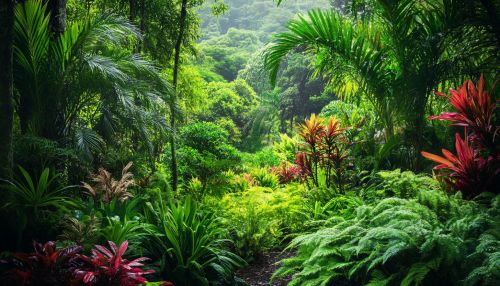World Conservation Union
Introduction
The World Conservation Union, also known as the International Union for Conservation of Nature (IUCN), is a global organization dedicated to the conservation of natural resources. Established in 1948, the IUCN brings together states, government agencies, non-governmental organizations (NGOs), scientists, and experts to work collaboratively on environmental issues. The Union's mission is to influence, encourage, and assist societies worldwide to conserve the integrity and diversity of nature and to ensure that any use of natural resources is equitable and ecologically sustainable.
History
The IUCN was founded on October 5, 1948, in Fontainebleau, France, following an international conference convened by UNESCO. The primary objective was to create a network of experts and organizations that could provide scientific advice and practical solutions for conservation issues. Over the decades, the IUCN has grown significantly, expanding its membership and influence globally.
Structure and Governance
The IUCN operates through a unique structure that includes members, commissions, and a secretariat. The Union's governance is overseen by the World Conservation Congress, which meets every four years to set the organization's policies and priorities.
Members
The IUCN's membership is diverse, comprising over 1,400 organizations from more than 160 countries. Members include states, government agencies, NGOs, indigenous peoples' organizations, and academic institutions. This broad membership base allows the IUCN to draw on a wide range of expertise and perspectives.
Commissions
The IUCN has six commissions that focus on different aspects of conservation:
- Species Survival Commission (SSC)
- World Commission on Protected Areas (WCPA)
- Commission on Environmental Law (CEL)
- Commission on Education and Communication (CEC)
- Commission on Ecosystem Management (CEM)
- Commission on Environmental, Economic and Social Policy (CEESP)
Secretariat
The IUCN Secretariat is responsible for implementing the Union's policies and programs. It is headquartered in Gland, Switzerland, and operates regional offices around the world. The Secretariat coordinates the work of the commissions and supports the activities of the members.
Key Programs and Initiatives
The IUCN undertakes various programs and initiatives to address global conservation challenges. Some of the key programs include:
Red List of Threatened Species
The IUCN Red List of Threatened Species is one of the most comprehensive sources of information on the global conservation status of animal, fungi, and plant species. It provides critical data for conservation planning and policy-making.
Protected Areas
The IUCN plays a significant role in the establishment and management of protected areas worldwide. The World Database on Protected Areas (WDPA) is a key resource managed by the IUCN, providing detailed information on protected areas globally.
Ecosystem Management
The IUCN's Ecosystem Management Program focuses on promoting sustainable land and water use practices. It aims to maintain ecosystem services and biodiversity while supporting human livelihoods.
Climate Change
The IUCN addresses climate change through various initiatives, including the promotion of nature-based solutions. These solutions leverage natural processes to mitigate and adapt to the impacts of climate change.
Species Conservation
The IUCN's species conservation efforts are coordinated through the Species Survival Commission (SSC). This commission works on the conservation of specific species and their habitats, often through the development of action plans and recovery programs.
Achievements and Impact
The IUCN has made significant contributions to global conservation efforts. Some notable achievements include:
- The establishment of the World Heritage Convention in collaboration with UNESCO, which protects cultural and natural heritage sites of outstanding universal value.
- The development of the Convention on Biological Diversity (CBD), a key international treaty aimed at conserving biodiversity, promoting sustainable use, and ensuring fair sharing of benefits arising from genetic resources.
- The creation of the Ramsar Convention on Wetlands, which focuses on the conservation and wise use of wetlands.
Challenges and Criticisms
Despite its successes, the IUCN faces several challenges and criticisms. These include:
- Balancing the interests of diverse members, which can sometimes lead to conflicts and compromises that may dilute conservation outcomes.
- Ensuring adequate funding and resources to implement its programs effectively.
- Addressing the complex and often politically sensitive nature of conservation issues, which can hinder progress.
Future Directions
The IUCN continues to evolve and adapt to emerging conservation challenges. Future directions for the Union include:
- Enhancing the integration of biodiversity conservation into broader development agendas.
- Strengthening partnerships with the private sector to promote sustainable business practices.
- Expanding the use of technology and data analytics to improve conservation planning and monitoring.
See Also
References


